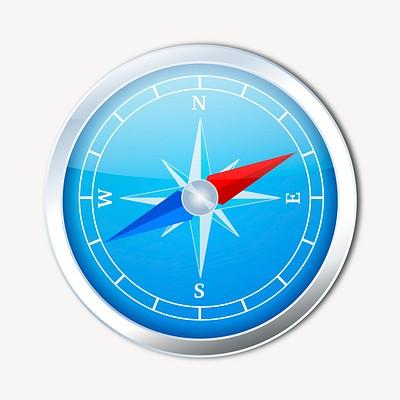
Lost in a world paved by modern technology, our innate sense of direction often yearns to break free from the shackles of GPS and satellite beacons. Unleash your inner explorer, for we invite you on a journey back to the ancient art of compass navigation – a feat that demands intuition, precision, and an unwavering connection to the earth’s magnetic field. In this intricate dance between man and compass, we shall unravel the secrets of mastering this lost art, allowing you to traverse uncharted lands with confidence and grace. So strap on your metaphorical adventurer’s boots and prepare to embark on a quest where cardinal points become your true north, guiding you through uncharted territories in the most enchanting way possible. Welcome to the realm where the humble compass shall reveal its unparalleled power, where navigating with precision evolves from a simple task to an extraordinary expedition.

Introduction: Exploring the Art of Compass Navigation
Compass navigation is an ancient practice that has stood the test of time, enabling explorers and adventurers to traverse vast landscapes with precision and confidence. In this article, we will delve deep into the art of compass navigation, uncovering its secrets and unlocking its potential to navigate with unparalleled accuracy.
At its essence, compass navigation relies on the interaction between a magnetic needle and the Earth’s magnetic field. By understanding how to interpret the direction and angle of the needle, we can determine our current position, plot a course, and ultimately reach our intended destination.
One of the key skills to master in compass navigation is orienteering, which involves aligning your compass with the Earth’s magnetic field. This ensures that the needle points accurately towards magnetic north, serving as a reliable reference point. Moreover, precise map reading is essential for effective navigation. By combining the information from your compass with the visual representation provided by maps, you can enhance your understanding of the surrounding terrain and make informed decisions about your route.
Another crucial aspect of mastering compass navigation is understanding how to compensate for declination. Declination refers to the difference between true north (the North Pole) and magnetic north (as indicated by your compass). This variation varies depending on your location on the Earth’s surface and changes over time. By adjusting for declination, you can ensure that your compass readings correspond accurately with the geographic references on your map, leading to more accurate navigation.

Understanding the Fundamentals: A Comprehensive Guide to the Compass
About the Compass
A compass is a timeless tool that has guided explorers, hikers, and adventurers for centuries. Whether you are embarking on a thrilling wilderness expedition or simply trying to find your way in an unfamiliar city, mastering the art of compass navigation is a skill that can help you navigate with precision. As you embark on this journey of understanding the fundamentals, you will unlock the secrets of this invaluable device and gain the confidence to explore the world around you.
Mapping Your Path: The Basic Components
To truly master compass navigation, it is essential to familiarize yourself with the basic components of this remarkable instrument. A compass typically consists of the following elements:
- The needle: This essential part of the compass is magnetized and aligns itself with the Earth’s magnetic field.
- The housing: The needle is enclosed within a housing that enables it to rotate freely.
- The baseplate: This transparent plate is marked with a ruler, which helps you measure distances on a map.
- The orienting arrow: Positioned under the needle, this arrow points towards the direction you want to travel.
By understanding how these components work together, you will be able to harness the power of the compass and navigate like a true explorer.
Mastering the Art: Techniques and Tips
Now that you are familiar with the basics of compass navigation, it’s time to delve into some essential techniques and tips that will elevate your skills to new heights. Here are a few key strategies to consider:
- Orientation: Before setting off on your journey, make sure to align the compass with your map using the orienting arrow.
- Bearing: Determine the angle between the direction you want to go and the magnetic north, which will guide you along the correct path.
- Backbearing: In case you need to retrace your steps, use the backbearing technique to find the direction opposite to your current heading.
- Declination: Adjust for the difference between true north and magnetic north in order to navigate accurately.
By honing these techniques and incorporating them into your navigational routine, you will be well on your way to mastering the art of compass navigation.

Techniques for Accurate Orientation and Bearing Determination
Precision with Shadow Stick
One fascinating technique to determine accurate orientation is by using a shadow stick. This method relies on the Earth’s natural movement, where the length of shadows changes as the sun moves across the sky. By placing a straight stick vertically into the ground and marking the tip of its shadow at specific intervals, you can determine true north or directions with stunning accuracy.
Mastering Triangulation
Triangulation is a powerful technique that enables you to pinpoint your exact location by taking bearings on two or more known landmarks. By carefully aligning your compass with these reference points and marking the angle, you can accurately determine your position on a map. This technique is particularly useful when navigating through dense vegetation or unfamiliar terrain without distinct landmarks.
Utilize Re-section for Precision
In situations where you have lost track of your exact location, re-section can come to your rescue. It involves taking bearings on two or more recognizable landmarks and calculating their intersecting point. By comparing this intersection with your map, you can accurately identify your position. This technique is especially valuable in scenarios where visibility is limited or difficult to navigate.
Effective Use of Declination
Declination refers to the difference between magnetic north (the direction a compass needle points) and true north (the North Pole). Understanding and compensating for this declination is crucial for accurate navigation. By adjusting your compass needle to factor in declination, you can ensure your bearings align with true north and navigate with precision in any geographical location.

Mastering Advanced Navigation Skills: Navigating through Challenging Terrain
Navigating through challenging terrains is an essential skill for any outdoor enthusiast. Whether you’re an avid hiker, an adventurous backpacker, or a survival enthusiast, mastering advanced navigation skills will allow you to confidently explore uncharted territories. One such skill that is crucial to develop is compass navigation, which enables you to navigate with precision and accuracy. In this post, we will dive deep into the art of compass navigation, providing you with invaluable insights and techniques to master this skill.
**Understanding the Compass:**
Before we delve into the intricacies of compass navigation, it is important to familiarize ourselves with this compass tool. A compass consists of a magnetic needle that aligns itself with the Earth’s magnetic field, always pointing towards the Earth’s magnetic north. It is housed within a circular compass housing, which is marked with degrees from 0 to 360. By understanding how to interpret these markings and utilize the magnetic needle, you’ll be able to make accurate navigation decisions even in the most challenging terrains.
**Setting a Course with the Compass:**
Once you have a clear understanding of how the compass functions, the next step is to learn how to set a course using this invaluable tool. The first thing you need to do is establish your current location on a topographic map. By identifying key landmarks, map coordinates, or intersecting lines, you can determine your exact position. Once you’re aware of your location, you can determine the direction of your desired destination and align the compass accordingly. By taking into account the magnetic declination—an adjustment for the difference between true north and magnetic north—you can ensure accurate course setting.
**Using Landmarks and Bearings:**
Now that you have a course set on your compass, it’s crucial to validate your navigation decisions with the help of landmarks and bearings. Landmarks act as reference points that help confirm your location or indicate upcoming changes in terrain. By aligning your compass with landmarks on your intended route, you can compare the bearing (or the compass direction) of the landmark with your set course. This allows you to make accurate adjustments to your path, navigate around obstacles, and ensure you stay on track.
**Taking Triangulation to the Next Level:**
Triangulation is a powerful technique that involves using three or more landmarks to pinpoint your exact location. By identifying prominent landmarks on your topographic map, aligning them with your compass, and plotting the intersecting lines, you’ll be able to determine your precise location. This technique is particularly useful when navigating through tricky terrains or when venturing into unfamiliar territories. It enables you to maintain a constant awareness of your whereabouts, significantly reducing the risk of getting lost. Mastering the art of compass navigation takes practice, patience, and a keen eye for detail. By understanding the compass, setting accurate courses, utilizing landmarks and bearings, and taking triangulation to the next level, you’ll be able to navigate through challenging terrains with unwavering precision. So, grab your compass, put on your adventurer’s hat, and embark on exciting journeys with confidence. The world awaits, and with your newfound skills, you can navigate it fearlessly.

Unlocking the Secrets of Expert Compass Navigation: Tips and Tricks
When it comes to exploring the great outdoors, compass navigation is an essential skill that every adventurer should master. By honing your compass navigation skills, you can confidently navigate through unfamiliar territories, ensuring you never lose your way. In this post, we will dive deep into the art of compass navigation, revealing insider tips and tricks that will elevate your precision and confidence when using a compass in the field.
Understanding the Basics
Before delving into the more advanced techniques, it is important to grasp the basics of compass navigation. Familiarize yourself with the different components of a compass, such as the baseplate, needle, and compass rose. Learn how to align the compass with the map, ensuring the north arrow points to true north. This simple step ensures accurate navigation even in challenging terrain.
Utilizing Triangulation
Triangulation is a powerful technique that can dramatically improve your navigation accuracy. By identifying two or more prominent landmarks on your map and using your compass to determine their magnetic bearing, you can pinpoint your exact location. This method allows you to navigate confidently, even when dealing with complex topography or dense vegetation. Remember to account for declination, the difference between magnetic and true north, to avoid any errors in your calculations.
Accounting for Slope and Tilting
When traversing steep slopes or rugged terrain, it is crucial to adjust your compass technique. If you fail to account for slope and tilting, your compass readings may lead you astray. To mitigate this, keep your compass level, align the needle with the magnetic north, and adjust your direction accordingly. This ensures that you stay on the right course despite challenging landscape features. Practice this technique in varying terrains to increase your confidence.
Additional Tips and Resources
- Always carry a map and compass as backup, even if you heavily rely on GPS devices.
- Regularly calibrate your compass to maintain accuracy.
- Consider attending compass navigation workshops or joining outdoor clubs to learn from experienced navigators.
- Be aware of natural or artificial electromagnetic interference that may affect your compass readings.
Q&A
Q: How can I become a master of compass navigation?
A: By following the principles and techniques outlined in this article, you can elevate your skills and become a true master of compass navigation.
Q: What is the importance of compass navigation?
A: Compass navigation is essential for explorers, adventurers, hikers, and outdoor enthusiasts who rely on accurate direction finding. Mastering this skill allows you to confidently navigate through unknown territories and remote locations without the need for modern technology.
Q: How does a compass work?
A: A compass consists of a magnetized needle that aligns itself with the Earth’s magnetic field, pointing towards the Earth’s magnetic north. By comparing this information with other landmarks or known reference points, you can determine your own direction and navigate accurately. It is important to note that magnetic north and true north (geographic north) are not the same.
Q: What are the basic components of a compass?
A: A compass usually consists of a baseplate, housing the magnetized needle, marked with degrees and cardinal directions. It may also have a rotating bezel that helps measure angles and a sighting mirror for more precise readings. Q: How do I orient the map using a compass? A: To orient a map using a compass, place the compass on the map with the direction of travel arrow pointing towards the top edge of the map. Rotate the map and compass together until the magnetic needle aligns with the compass housing’s red arrow. Once aligned, the map is now correctly oriented.
Q: How can I find my direction using a compass?
A: To find your direction, hold the compass flat and level, ensuring the needle is freely floating. Rotate your body until the magnetic needle aligns with the orienting arrow inside the compass housing. The direction of travel arrow now points towards the direction you’re facing.
Q: What is a bearing, and how is it used in compass navigation?
A: In compass navigation, a bearing is a precise direction measured in degrees. By aligning the compass needle with a given bearing, you can navigate in a specific direction while bypassing obstacles or following a predetermined path.
Q: How can I navigate using a map and compass together?
A: By locating your position on the map, identifying prominent landmarks or natural features around you, and measuring the bearing between your location and your desired destination, you can plot a course using your compass and efficiently navigate to your intended target.
Q: Are there any special techniques for night navigation with a compass?
A: Night navigation requires extra caution and attention to detail. Special techniques involve using luminous tools like a glow-in-the-dark compass or using a flashlight to illuminate your compass to read bearings accurately.
Q: Can I rely solely on a compass for navigation, even in the absence of other tools?
A: While a compass is an extremely useful tool, it is always recommended to carry additional navigation tools such as maps, GPS devices, or celestial navigation tools. Relying solely on a compass could be risky, especially in unfamiliar or challenging terrain.
Q: How long does it take to become proficient in compass navigation?
A: Becoming proficient in compass navigation requires practice, patience, and a good understanding of the techniques. The learning curve varies for individuals, but consistent practice and a willingness to learn will significantly expedite the process.
Q: Are there any advanced techniques that I can explore after mastering the basics of compass navigation?
A: Yes, after mastering the basics, you can explore advanced techniques like triangulation, resection, and using topographic maps in conjunction with a compass for more precise and complex navigation challenges.
Q: Can I use a compass in different regions of the world, or does it have limitations?
A: Compasses can be used globally since the Earth’s magnetic field covers the entire planet. However, it is essential to be aware of magnetic deviations and adjust your compass readings accordingly in certain regions, especially near the poles or areas with odd geological formations.
Q: Is it possible to use a smartphone as a compass substitute?
A: While smartphones may have compass applications, they can be less reliable due to various factors like limited battery life, dependency on electronic components, and potential signal interruptions. Hence, it is always recommended to carry a physical compass as a backup when relying on electronic devices for navigation.
Q: Are there any final tips or advice for aspiring compass masters?
A: Practice regularly to develop muscle memory and become comfortable with your compass. Familiarize yourself with the local area’s landmarks and geography. Always carry a spare compass and educate yourself on the specific features and functions of your chosen compass model. Remember, mastering compass navigation is a lifelong journey, so enjoy the process and embrace the sense of adventure that comes with it! As we journeyed through the intricacies of compass navigation, we stumbled upon a newfound appreciation for the ancient art of finding our way through the wilderness. From the enchantment of aligning with the Earth’s magnetic field to deciphering the secret language of cartographic symbols, we discovered the immense power of mastering this art. With each passing stride, we delved deeper into the world of compass navigation, unearthing the hidden gems that lie within. The ability to navigate with precision became our compass, guiding us towards uncharted territories with unwavering certainty. The compass, a humble instrument, morphed into a steadfast companion, a trusted confidant in our adventures. We unraveled the secrets of declination, that enigmatic phenomenon that challenged our sense of direction, only to realize that it was but a puzzle waiting to be solved. Aligning ourselves with the invisible forces of nature, we merged with the very essence of exploration. The demystification of azimuths and bearings transformed our perception of maps from mere drawings to the gateways of discoveries yet to be made. As we embraced the art of compass navigation, we transcended the limitations of our physical surroundings, navigating not only through the wilderness but also through the corridors of our own minds. The art of stillness, of trusting our inner compass, became our guiding force, helping us navigate the complexities of life with unwavering resilience. So, my fellow adventurers, let us bid farewell to the mysteries of compass navigation, but not without carrying its wisdom in our hearts. May we remember that in this vast world, filled with boundless possibilities, the compass will forever be our steadfast companion, pointing us towards our true north, both on the trail and in our souls. In this final chapter of our journey, we bow to the wisdom of the compass, forever grateful for the insights it has bestowed upon us. And as we venture forth into the unknown, guided by the magnetic whispers of the Earth, we know that with precision and determination, we shall always find our way.






